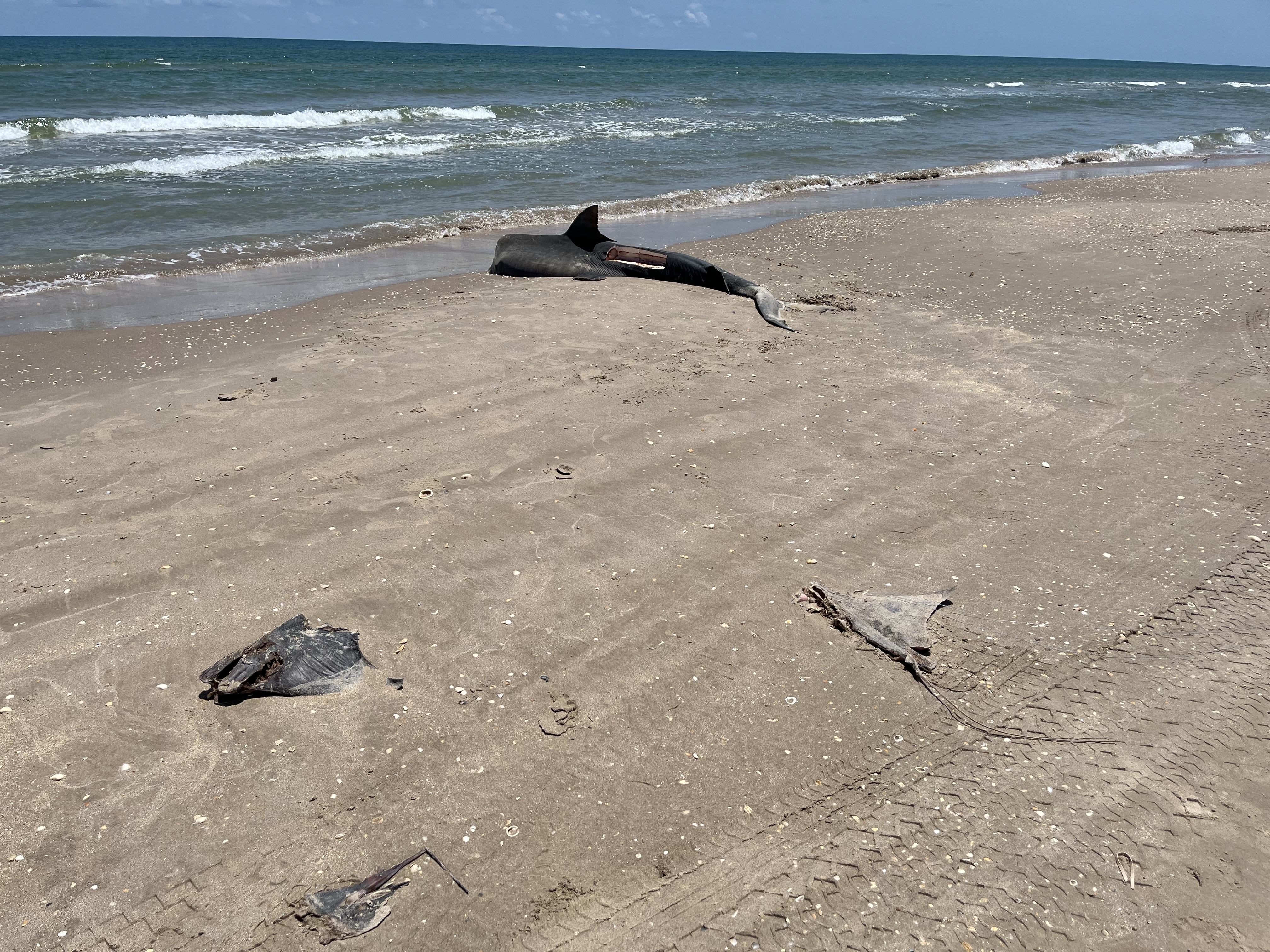News Release
You are viewing ARCHIVED content published online before January 20, 2025.
Please note that this content is NOT UPDATED, and links may not work. For current information,
visit https://www.nps.gov/aboutus/news/index.htm.

|
Subscribe
|
Contact: Kelly Taylor, Public Information Officer, 361-949-1970 (office), 361-446-9074 (cell)
CORPUS CHRISTI, Texas – A recent investigation by Padre Island National Seashore NPS law enforcement and Texas Parks and Wildlife Department (TPWD) resulted in an individual being cited for “waste of fish.” In Texas, it is legal to fish for and harvest shark. However, it is unlawful to leave shark or bait fish taken from public waters to die without the intent to retain the fish for consumption or bait.In early August NPS law enforcement rangers and science and resources management staff documented a decapitated tiger shark and bull shark, a deceased and mutilated sting ray and approximately 15 mostly intact deceased crabs.
NPS law enforcement rangers, in collaboration with TPWD game wardens, located a suspect and conducted an interview. The individual confessed to decapitating the sharks, harvesting some meat, and leaving the shark bodies on the beach to be scavenged and rot. As a result, TPWD game wardens issued multiple citations for “waste of fish.” TPWD will be seeking civil restitution for the assessed monetary value of the sharks.
The success of this case can be attributed to collaboration among group teams within the park, as well as the partnership between NPS law enforcement rangers and TPWD game wardens. If not for all individuals involved, this case may never have been discovered or resolved.
To ensure the viability of shark and fish populations into the future, park visitors interested in fishing at the national seashore must follow applicable state fishing regulations. For more information about fishing at Padre Island National Seashore, please visit www.nps.gov/pais/planyourvisit/fishing.
If you witness a wildlife crime, please call the TPWD Operation Game Thief (OGT) hotline at 1-800-792-GAME (4263). OGT offers rewards of up to $1,000 for information leading to the conviction of a wildlife crime.
About Padre Island National Seashore
Padre Island National Seashore preserves, protects and interprets the outstanding natural, cultural, and recreational resources of the longest undeveloped barrier island beach in the United States and its surrounding waters for public benefit, inspiration and scientific understanding. The park’s 130,000 acres and waters provide important habitat for marine and terrestrial plants and animal, including over 58 species of special concern.
Last updated: September 7, 2024
